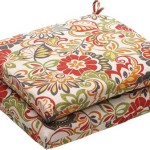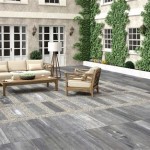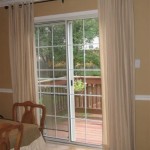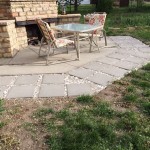How to Enclose a Covered Patio
Adding an enclosure to your covered patio can transform it into a versatile space that you can enjoy year-round. It creates an additional living area, protects from the elements, and enhances your home's overall aesthetic appeal. Enclosing a patio involves several considerations, including the materials, budget, and desired functionality. This article will outline the steps involved in enclosing a covered patio, providing guidance on choosing the right materials and ensuring a successful project.
1. Planning and Preparation
Before embarking on the enclosure process, meticulous planning is crucial. This phase involves determining the project's scope, securing necessary permits, and gathering the required tools and materials.
*
Determine the Scope:
Consider the desired level of enclosure and how it integrates with your existing patio structure. Will it be a complete enclosure with walls and a roof, or a partial enclosure with screens or retractable panels? *Obtain Necessary Permits:
Contact your local building department to inquire about permit requirements for patio enclosures. These requirements may differ depending on your location and the project's scale. *Prepare the Space:
Clear the patio area of any obstacles, including furniture, plants, and debris. This will allow for smooth installation and prevent damage. *Consider the Foundation:
Evaluate the existing patio foundation to ensure its suitability for the added weight of the enclosure. If necessary, reinforce the foundation to provide adequate support.2. Choosing the Right Materials
The choice of materials plays a significant role in the effectiveness and aesthetic appeal of your enclosed patio. Several options are available, each offering unique advantages and considerations.
*
Walls:
*Glass:
Provides a seamless view of the surroundings and allows maximum natural light penetration. However, it can be expensive and may require regular cleaning. *Screened Walls:
Offer excellent ventilation and a sense of openness while providing protection from insects. Screens are generally less expensive than other options but may offer limited privacy. *Solid Walls:
Constructed with materials like wood, vinyl, or composite, these walls offer better insulation, privacy, and noise reduction. They are more durable and less prone to damage. *Roof:
*Solid Roof:
Offers excellent weather protection and can be constructed using materials such as wood, metal, or composite. It provides a more secure space and can be used for storage. *Retractable Roof:
Allows you to enjoy the open air when desired while offering protection from sun or rain. It's a versatile option but may be more expensive. *Flooring:
*Tile:
Provides a durable and low-maintenance flooring option that adds a touch of elegance. *Concrete:
A sturdy and cost-effective choice that can be stained or painted to enhance its appearance. *Decking:
Creates a warm and inviting atmosphere and can be installed in various styles. *Artificial Turf:
Offers a low-maintenance and water-efficient option that creates a lush and natural-looking outdoor area.3. Installation Process
Once you have chosen the materials and obtained necessary permits, the installation process can begin. The specific steps will vary depending on the chosen materials and design, but a general outline is provided below.
*
Framing:
Construct a framework for the walls and roof using sturdy materials such as wood or aluminum. Ensure the framing is level and plumb to create a solid base for the final enclosures. *Wall Installation:
Install the chosen wall materials based on the plan. Secure glass panels using specialized hardware, attach screens to the frame, and secure solid walls with appropriate fasteners. *Roof Installation:
Install the chosen roof material, ensuring it's properly sealed to prevent leaks. *Finishing Touches:
Add windows, doors, and any desired hardware to complete the enclosure. *Electrical and Plumbing:
Install electrical wiring and plumbing lines as necessary, ensuring compliance with local building codes. *Maintenance:
Regular cleaning and maintenance are crucial to ensure the longevity of your enclosed patio.Enclosing a covered patio can significantly enhance your home's functionality and aesthetic appeal. By carefully planning, selecting suitable materials, and implementing the installation process correctly, you can create a comfortable and inviting space that extends your living area and provides year-round enjoyment.

How To Enclose A Covered Porch Close Off Your For The Winter

How To Enclose A Covered Porch Close Off Your For The Winter

How To Enclose A Patio Porch Or Deck
.jpg?strip=all)
Everything You Need To Know About Enclosing An Existing Outdoor Space

How To Enclose A Patio Verandah Or Pergola Ultimate Backyard

4 Types Of Home Patio Enclosures Enclosure

How To Enclose A Patio With Walls Room Enclosed Porch Remodel

How To Enclose A Patio Ziptrak

How To Prep Enclose Your Patio Sunrooms Enclosures Com

How We Built An Enclosed Patio With Windows Our Faux Farmhouse








